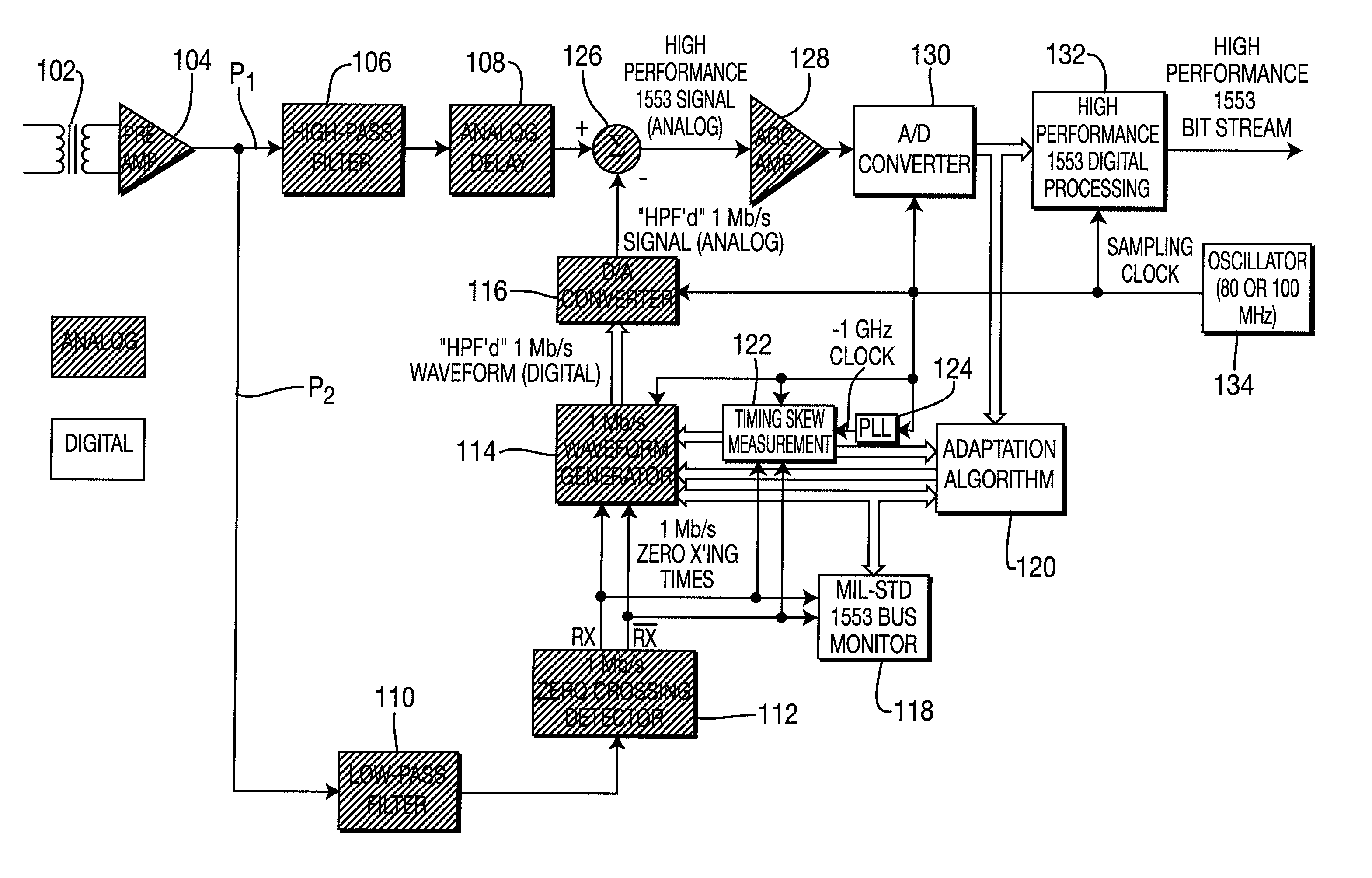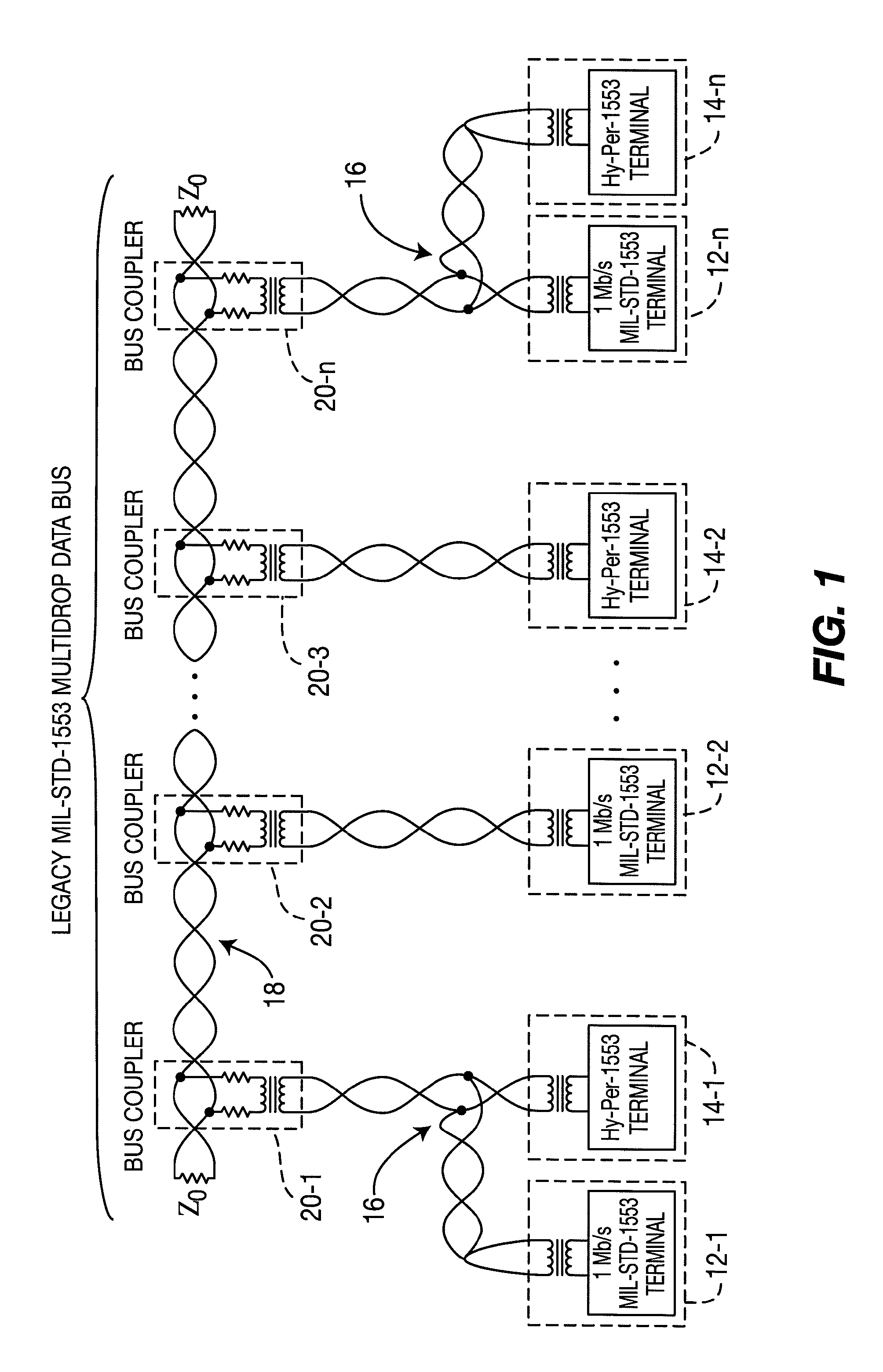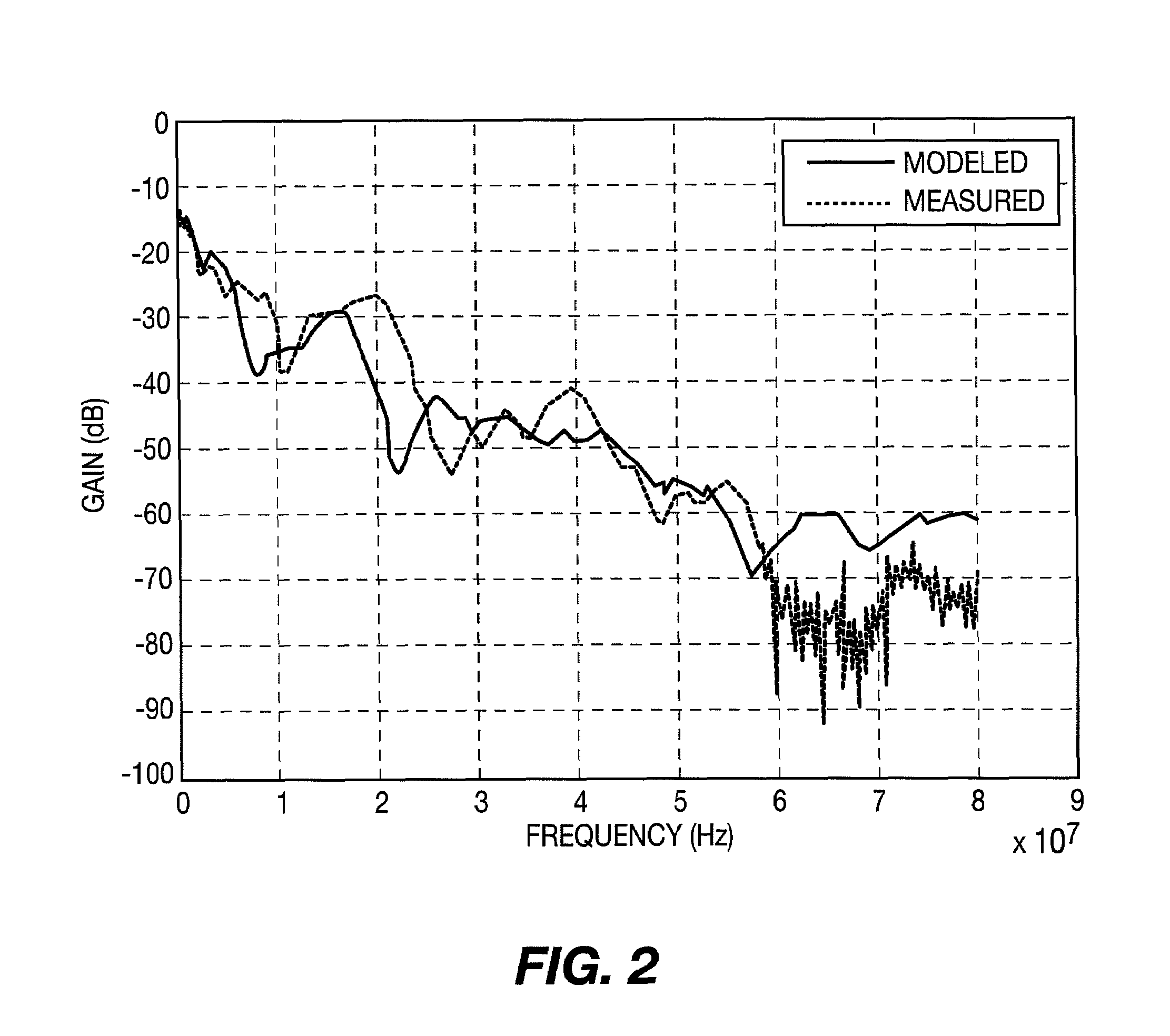Predictive signal cancellation for extracting 1 Mb/s MIL-STD-1553 component from composite high performance 1553 signal
a high-performance, signal-based technology, applied in the direction of amplitude demodulation, line-faulst/interference reduction, pulse technique, etc., can solve the problems of prohibitively high cost, significant cost and logistics issues, and increase the demand for network bandwidth and scalability beyond 1 mb/s. achieve the effect of optimal operation
- Summary
- Abstract
- Description
- Claims
- Application Information
AI Technical Summary
Benefits of technology
Problems solved by technology
Method used
Image
Examples
Embodiment Construction
[0025]The theoretical maximum capacity of a communication channel is given by equation [1], the Shannon equation:
C=W×Log2(1+S / N) [1]
[0026]where:
[0027]C=the channel's maximum capacity, the bits per second
[0028]S=the signal level at the receiver, in RMS volts
[0029]N=the level of white Gaussian noise at the receiver, in RMS volts
[0030]W=the bandwidth of the signal, in Hertz
[0031]For the case where the signal and noise levels vary as a function of frequency over a frequency range of f1 to f2, the modified form of Shannon's capacity equation is given by equation [2].
C=∫f2f1 Log2(1+S(f) / N(f))df [2]
[0032]FIG. 2 illustrates the modeled and measured channel response of a MIL-STD-1553 bus from DC to 80 MHz. The indicated high frequency attenuation is attributable to bus cable, coupling transformers, and stub loading. As a result, for the purpose of maximizing channel data rate, the “prime real estate” area of frequency spectrum is in the lower portion of the range.
[0033]1 Mb / s MIL-STD-1553 ...
PUM
 Login to View More
Login to View More Abstract
Description
Claims
Application Information
 Login to View More
Login to View More - R&D
- Intellectual Property
- Life Sciences
- Materials
- Tech Scout
- Unparalleled Data Quality
- Higher Quality Content
- 60% Fewer Hallucinations
Browse by: Latest US Patents, China's latest patents, Technical Efficacy Thesaurus, Application Domain, Technology Topic, Popular Technical Reports.
© 2025 PatSnap. All rights reserved.Legal|Privacy policy|Modern Slavery Act Transparency Statement|Sitemap|About US| Contact US: help@patsnap.com



